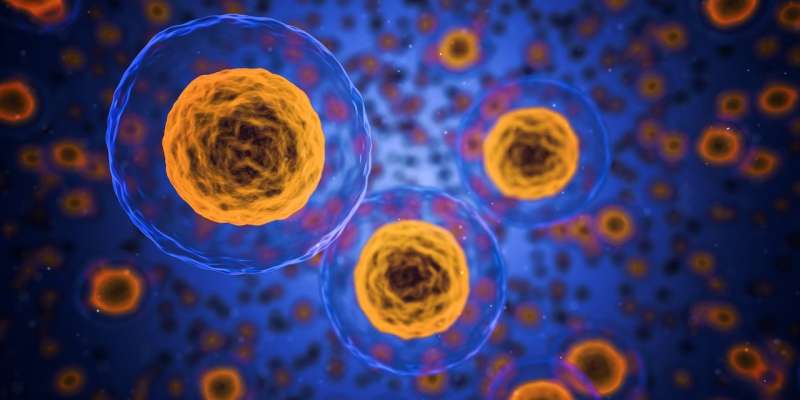Researchers clarify the identity of brain stem cells

The human nervous system is a complex structure that sends electrical signals from the brain to the rest of the body, enabling us to move and think. Unfortunately, when brain cells are damaged by trauma or disease they don't automatically regenerate. This can lead to permanent disability.
But within the brain there are a small number of stem cells that persist into adulthood, offering a possible source of new cells to repair the damaged brain.
Work by researchers at the University of Calgary Faculty of Veterinary Medicine sheds new light on the identity of the brain cells that exhibit neural stem cell function.
One type, astrocyte neural stem cells, can self-renew and generate new neurons, particularly following brain injury. The other type - called ependymal cells - provide a supportive lining between the brain and the fluid that bathes the brain.
"Importantly, ependymal cells that line the caverns of the brain also sit right next to neural stem cells, suggesting that they might be important regulators of neural stem cell function," says senior author on the study Jeff Biernaskie, PhD, Calgary Firefighters Burn Treatment Society Chair in Skin Regeneration and Wound Healing, associate professor of stem cell biology in the Faculty of Veterinary Medicine.
"However, several high-profile studies have suggested that ependymal cells can actually become neural stem cells themselves, when activated by an injury to the brain. Our work provides evidence this is not the case and provides new insight into how they might contribute to brain function."
Biernaskie's research is published in the May 3rd edition of the journal Cell. Co-lead authors on the study are Prajay Shah and Jo Anne Stratton.
In the study, the researchers developed a process allowing them to specifically label ependymal cells within the adult brain, while avoiding astrocyte stem cells. Biernaskie says the research not only clarifies the identity of the adult neural stem cell, it also provides a new model to study the function of ependymal cells and their role in maintaining normal brain function.
"We hope the model we have developed will be an important tool toward understanding the impact of ependymal cell dysfunction during both brain development and in the onset of neurodegenerative diseases."




















